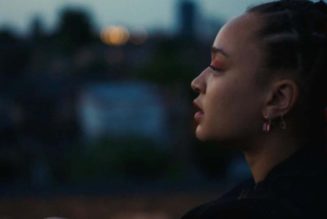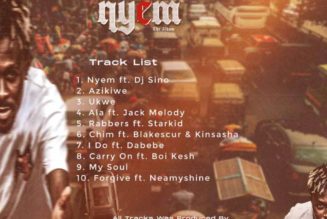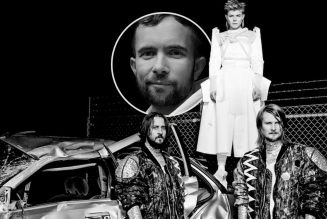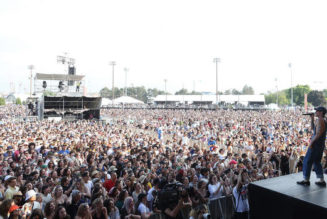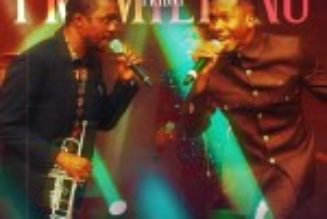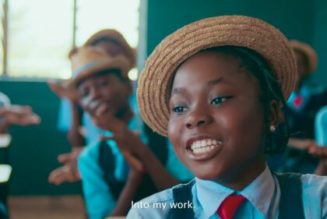By Jaelani Turner-Williams
Reimagining the future of Black New Orleans music, Southern-bred polymath Dawn Richard is breathing new life into her hometown on her latest album, Second Line. She started with its title.
A second line is a traditional jazz foot-led parade that traces its origins back to the 19th century. They’re notably also funeral processions that celebrate the legacy of someone who’s passed with a marching brass band whose swing overtakes the city’s streets. All are welcome to join the spirited homecoming. Richard envisioned her own Second Line to make way for progressive Black women artists by shedding the R&B and hip-hop expectations of her past. Marking the death of old ideas, Second Line is a revival of the singer-songwriter-dancer-actress’s genre-bending experimentation, complete with rhapsodic bass-heavy production and an electronic nod to Afrofuturism.
“When we think of New Orleans, we think of jazz, soul, R&B. We don’t think of electronic, dance, and pop. It’s all I’ve ever known and what I wanted to expose the world to, through the lens of New Orleans,” Richard told MTV News. “I’m hoping that through this album, you’ll start to see the celebration of artists not being celebrated by the color of their skin or the genre that we choose to box them in, but rather by the talent and the art that they expose to the world.”
To Richard, the electronic movement is in dire need of a Black renaissance. While house was created by queer Black artists in Chicago during the 1970s and laid the foundation for contemporary dance music, the genre has largely been dominated by white, straight, cisgender producers and DJs. It later progressed into Black-oriented subgenres like Chicago footwork, D.C. go-go, and New Orleans bounce music, but Black musicians are often still relegated to the underground. Still, there’s incremental progress: In March, multi-genre Canadian DJ and producer Kaytranada was the first Black artist in the category’s 16-year history to nab a Grammy for Best Dance/Electronic Album. Richard, too, joins the ranks of today’s innovators, specifically women, who are transforming the genre, including singers Kelela, FKA Twigs, and Bosco.
“When I was coming up, I loved the Björks and Imogen Heaps of the world, but I didn’t have anyone that looked like me that was in the genres that I loved. We didn’t have social media and technology the way it was then, so I couldn’t find the artists that were influential for me coming into this space,” Richard said. “I hope that with this album, it’ll open a floodgate so that when you ask the next artists under me who were their inspirations, they can name more than one token Black artist as an inspiration to them in a genre that isn’t hip-hop or R&B.”
Paying homage to the liveliness of New Orleans parades, Second Line embodies a seductive blend of sounds that swell and surge, complete with nods to trap, soul, and synthpop. Throughout the album, Richard seeps into self-discovery and liberation, with ambitious sonics to match. On “Voodoo (Intermission),” Richard’s mother warns visitors not to “mess with a Louisiana girl” as the song coasts into a sleek guitar-tinged funk.
Through the intoxicating sonics of Second Line, Richard again reinvents herself as she’s done consistently over the course of 15 years in the public eye. In 2005, she became a Bad Boy Records darling as part of the girl group Danity Kane, as documented on MTV’s Making the Band, and later as one-third of electro-laced force Diddy-Dirty Money. Leaving Bad Boy Records in 2012, Richard went the independent route and dropped a series of albums throughout the 2010s, including Goldenheart, Blackheart, Redemptionheart, and New Breed, all while moonlighting as culture curator for Adult Swim (highlighting creative projects by Black visual artists) and starting NOLA plant-based food hub Papa Ted’s, an homage to her late grandfather.
2019’s New Breed threaded Richard’s narrative of New Orleans glory through spoken-word clips from the Washitaw Nation sovereign group and her rich vocals. Second Line carves space for the same familial empowerment, with a focus on her mother’s crucial influence on her development and perspective. “On New Breed, I gave the narration of my father through his music and the Haitian culture that he was a part of,” Richard said. “With [Second Line], I thought it was important to show how my mom is the reason why I am the way I am. Her outlook on life, how she loved, how she lived, how she chose to approach life is a lot of the reason why I see myself as a king. That’s why she was important to be the narrator of this story, and why this album has such a strength to it, to purposely say we exist in this space and we need to be seen in this space.”
 Petros Koy
Petros KoyMasked behind an animated alter ego called King Creole, Richard encompasses the multi-dimensional approach of the album and the singer’s version of Black New Orleans. Down to her gold-plated armor on the album cover and animated shorts, King Creole is part-technology and part-human, and the evolution of Second Line itself speaks to the character’s growth. While the first half of the album is high-energy with an influx of vocal manipulation, its back end switches into vulnerable balladeer mode, eschewing the machine of King Creole and confronting her humanity. Defying gravity on “Boomerang,” Richard grooves over a house-centric bounce, with soaring vocals about an omnipresent lover. In Richard’s post-apocalyptic universe, New Orleans emulates the sleekness of 2017 sci-fi film Blade Runner 2049 while King Creole faces the concept of her existence and battles the mainstream status quo. In a battle of self, King Creole heroically finds her identity amidst societal pressures.
“Within King Creole is the truth of tech, AI, algorithm, but also the system and how it’s all built off of trends. But what happens when you’re not the trend anymore? How does the human side cope with that and the realness of that? Instead of being bitter, how do you come at it with freedom and happiness?” Richard said.“There’s machine versus human [and] system versus truth — that duality happens through life with all of us.”
The alluring visuals for Second Line, including singles “Bussifame,” “Pilot (A Lude),” and “Jacuzzi,” are filmed in synchrony with each other, with Richard and her accompanying dancers having identical features while inhabiting an alternative landscape. With grainy optics recalling VCR playback, Richard’s recent music videos follow the premise of New Orleans being captured through the lens of King Creole. In the fantasy of Second Line, the first beings to return to New Orleans are Black women, with the album’s raw intensity representing the dawn of a Black electronic music takeover.
“I want [New Orleans] to keep our aesthetic, because it is beautiful. We’ve got so much greatness coming out of our city,” Richard said. “Just think about the sauce that New Orleans is? That grit. I just want to show it in a space that maybe people weren’t seeing.”


